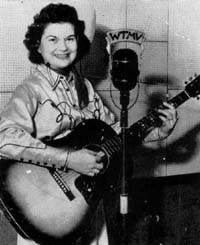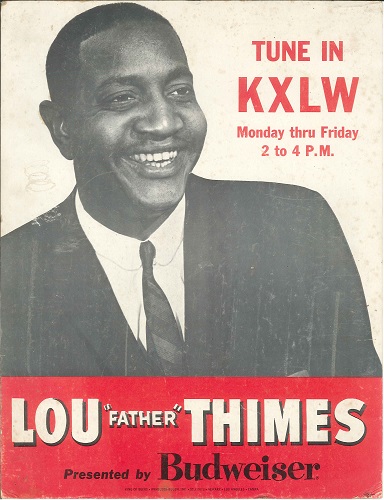Radio Articles
Early Program Gets Wide Praise From Listeners

Nearly 7200 letters and post cards have been received by Charley Stookey, announcer and advisor on the Early Morning Farm Folks Hour, since the program went on the air on October 3rd.
Replies have come from all but six states of the United States, Canada, Mexico, Alaska, Panama and New Zealand, and the program establishes a record not only with volume of mail but listener coverage. Washington, Oregon, Idaho, Nevada, Arizona and Utah are the only states who have not either sent in a reply or some gift characteristic of their sections of the country.
Illinois leads all the states with 1010 replies, Texas is second with 410 and Missouri third with 386. More than 100 letters have come from Canadian listeners.
This early program heard from 5:30 to 7 a.m. each morning features Wyoming Jack, the lovable cowboy; Len Johnson and his Ozark Mountaineers; Sunny Joe and his banjo; Sad Sam and his accordion and Ken Wright at the organ. Scarcely a day goes by without a gift of some sort coming to the group in the form of food for immediate consumption or some oddity of the section from which it comes. A curious counter has been set up outside the KMOX studios where the presents are displayed. They include everything from bottles of water and sand from the Gulf of Mexico to cocoanuts and fruit from Florida.
A sample letter:
Deering, Alaska
Dear Mr. Stookey:
Just a note to say your program is coming in fine. It’s just 5:45 a.m. your time and 1:30 a.m. by ours.
Please have “Jack” sing “Strawberry Roon” over again sometime if this letter reaches you, as he sure comes in clear.
I am at a trading post just south of the Arctic Circle, and the store is full, all sitting around taking in every word you send out.
Your weather report stated 38 above, light snow for St. Louis. Ours is clear with 20 degrees below zero.
Warren Ferguson
(Originally published in Radio and Entertainment 1/21/1933).
 her listeners could come up with one she didn’t know. A gifted musician on piano, harmonica, mandolin, Gibson guitar, banjo and bass, Susie kept the listeners of WTMV entertained for six years.
her listeners could come up with one she didn’t know. A gifted musician on piano, harmonica, mandolin, Gibson guitar, banjo and bass, Susie kept the listeners of WTMV entertained for six years.